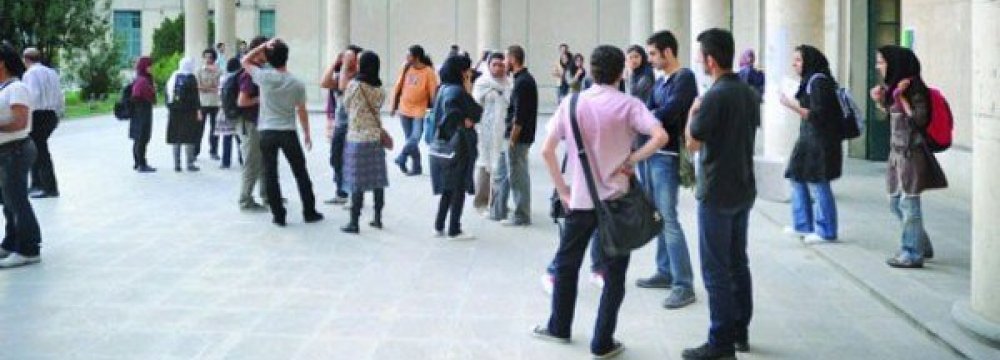Iran sits at the crossroads of civilizations. With a large, well educated and young population, a relatively high GDP per capita, and a strategic location, Iran has strong potential to become a leading economic force globally.
The recent lifting of the sanctions has already shifted the attention of global business leaders to the largest closed market to open for decades. The Iranian economy is characterized largely by the hydrocarbon sector, small scale agriculture and services sector and a large state presence in manufacturing and financial services.
It ranks second in the world in natural gas reserves and forth in proven crude oil reserves, reads an article published by UK-based provider of business and legal analysis Lexology.
Bordering the former CIS states and the Caspian Sea to meet Russia in the north and embracing the turquoise waters of the Persian Gulf to the south, Iran is the second largest economy in the Middle East and the MENA region after Saudi Arabia, and the 18th largest in the world.
Its 2015 GDP is estimated at $393.7 billion with a population of close to 80 million, second to Egypt. According to studies published in the Economist, as of September 2015, 93% of the Iranian adult population were literate. In 2008, 85% of the Iranian adult population was literate, well ahead of the regional average of 62%. This rate increases to 97% among young adults (aged between 15 and 24) without any discrepancy among male and female Iranians. By 2007, Iran had a student to workforce population ratio of 10.2%, standing among the countries with highest ratio in the world.
Since the revolution in 1979, successive Iranian governments have expanded the higher education sector, albeit under a strict new mandate. According to the latest statistics, Iran has approximately 4.5 million students, of which 60% are women.
Growing Demand
Data from the United Nations Educational, Scientific and Cultural Organization (UNESCO) suggests that enrolment at Iranian universities has more than doubled in a decade and accordingly to the Economist, in 2013, 58% of Iranians aged 18 to 24 were studying at Iranian universities. The government has set an ambitious target at 60% for 2025 which it aims to achieve.
Lifting of the sanctions and the potential for foreign direct investment or other forms of cooperative efforts in the development and expansion of the sector may in fact make this target more tenable. Today, Iranian parents spend more than £2.1 billion on the higher education of their children and with the lifting of sanctions, this financial commitment is likely to increase significantly, given the importance that Iranians ascribe to education in general and the sciences in particular.
This emphasis on higher education has deep roots in Iranian culture and is rooted in the country’s historical standing for pioneering advancements in almost all spheres of life from architecture, art, literature, science and government. Such advancements would not have been possible without the educational discipline inherent to ancient Persian civilization and traced to today’s collective disposition of Iranians in and out of government.
Highly Centralized
Education in Iran is highly centralized. The Ministry of Education is primarily responsible for educational planning, financing, administration, and the expansion and revisions of the curriculum, with the Ministry of Science and Technology and Ministry of Health and Medical Education in Iran supervising higher education. Teacher training, grading, and examinations are also the responsibility of the ministry.
Whereas Iran’s undergraduates are well accommodated in the country’s higher education institutions, the postgraduate infrastructure is much less developed and is an area within the sector where international cooperation or a form of direct foreign investment via non-Iranian institutions could be most successful. Iran’s higher education institutions, together with the support of the government have already set up an array of education agreements over the last months following the January 2016 nuclear agreement.
By way of an example, France’s ‘Ecole Polytechnique’, a leading institution has recently signed agreements with the University of Tehran, the University of Isfahan, and Sharif University of Technology. Earlier in the year a high-level Swiss delegation to Iran ratified a 2005 trade accord between the two countries, and also confirmed several agreements between Swiss and Iranian institutions.
More recent developments include a bilateral agreement with Slovakia that introduced partnership between the two countries’ universities of science and technology, and agreements with Armenia’s National Academy of Sciences. There have also been developments for joint research and exchange programs with Sweden, Cyprus, and the Kurdish Region.
Most of these are expected to initiate exchange programs, allowing undergraduate students to engage in a year of studies abroad or to complete a portion of master’s or doctoral programs abroad. These initiatives will pave the way for an incremental and measured cooperation between Iranian and foreign stakeholders in the higher education sector including future possible direct or joint investment in institutions.
Post-Graduate Sector
Moreover, given that there is also a marked discrepancy between demand for places and the ability of Iranian universities to absorb master’s and doctoral students, further expansion of post graduate institutions will present opportunities provided that the foreign counterpart is ready to work within a highly regulated environment where the relevant governmental institutions and ministries, including the parliament, will have a stake in the form and manner of the non-Iranian direct/indirect engagement in the education sector.
Historically Iranians have had a long tradition of pursuing higher education outside of the country and renowned institutions such as Sorbonne and Oxford have long been hosting Iranian students. Developing humanities and the social sciences domestically will mean greater opportunities for investment in that sector.
The realities of the Iranian brain drain has pressed upon policymakers the urgency to address the need for expansion and a strong desire to internationalize Iran’s universities and to foster cooperation with other institutions both in the region and beyond.





